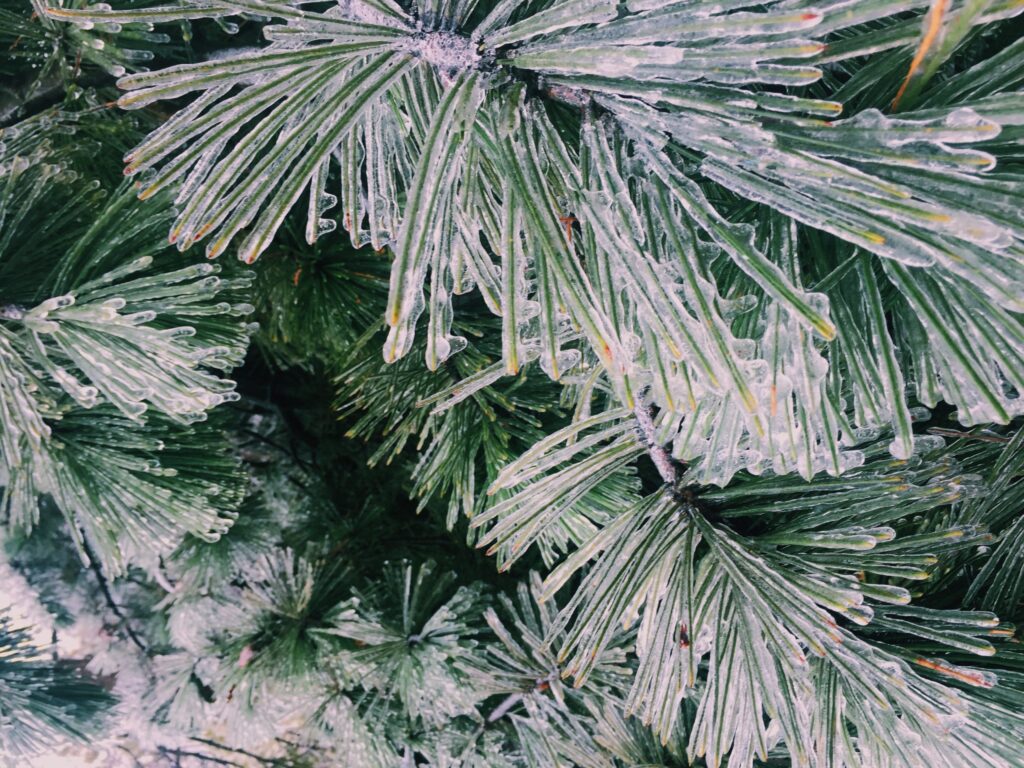The art of foraging is making a come-back. From Instagram influencers like @blackforager and celebrity chefs like @foragerchef, younger generations are paying more and more attention to the foods that already exist within their natural environment—including pine (!).
If you’re wondering what foraging is, foraging is the act of collecting food or provisions from your natural environment. Foraging can be anything from picking wild blueberries to sourcing mushrooms from your local region. Foraging, however, is not only limited to items commonly sold at a grocery store. While more often associated with Christmas trees and wreaths, pine trees offer a surprising amount of sustenance and can be foraged for foods and DIY home goods.

Ready to find out what you can do with the pine in your region? Read on to discover the surprising provisions you can make with pine below.
What Type of Pine to Forage?
Before you forage pine, it’s important to make sure you know to properly identify different pine trees so you don’t accidentally forage something poisonous. Yew, Cypress, and Norfolk pine are all considered poisonous and should be avoided. According to Ms. Shi & Mr. He, a good rule of thumb is to only forage from trees that have five needles per bundle (white pines). White pines are considered to be one of the tastier pine varieties and can commonly be found in New England, Canada, Michigan, and along the Appalachian Mountain Range.
Other safe coniferous varieties include pitch pine, Fraser fir, Douglas fir, balsam fir, blue spruce, Norway spruce, and white spruce. (Bonus: If you buy real Christmas trees, check the variety to see if you can use some of the pine from that tree for these foraged goods!)
Ready to discover delicious pine recipes? Read on below.
DIY Foraged Pine recipes
1. Brew A Pot of Pine Needle Tea
Surprisingly citrusy, pine needle tea is quite possibly the easiest way to transform pine into nourishment with a piping pot of freshly brewed tea. Wash and chop up the pine needles, measuring about a ½ cup of needles. Steep in boiling water along with other aromatics such as cinnamon, cardamom, oranges, and clove. According to Hilda’s Kitchen Blog, pine needle tea is rich in vitamins A and C (with about four times more vitamin C than a glass of orange juice). Other uses for pine needle tea include alleviating chest congestion, soothing sore throats, and reducing inflammation. Sweeten with your favorite sweetener, and enjoy!
2. Refresh with a Fizzy Glass of Pine Needle Soda
Due to the wild yeasts living on pine needles, you can actually turn pine needles into a delicious fizzy drink. To avoid killing the wild yeasts, avoid washing your pine needles for pine needle soda or exposing them to high heat.
Make the pine needle soda by placing the pine needles in a bowl with cold water and rubbing the pine needles slightly to wash the dust. Repeat three times until there is no noticeable dust in the water and then place in a bottle near a window with sunlight. Open on day three and serve with ice and lemon.
For full instructions, check out the recipe here.
3. Enjoy Pancakes and Pinecone Syrup
Also known as mugolio, pinecone syrup is a culinary delicacy that comes with a hefty price tag. Luckily for you, with some patience and a bit of research, you can make this special treat right inside your home!
Start the mugolio-making process by collecting young green pine cones in early spring or summer. According to Forager Chef, the smaller the cone, the stronger the flavor. Some foragers will even harvest pine cones as small as a pinky nail for best results.
Once you’ve collected about two cups of young pine cones, rinse them in warm water and discard any with holes or insects. Combine the pine cones with two cups of brown sugar and pack into a quart jar. Age for 30 days in a sunny spot, opening the jar occasionally to release any carbon dioxide. After 30 days, pour the sugar and pine cones into a pot and simmer until the sugar is melted. Strain to discard the cones and reduce the syrup for 5–10 minutes. After the syrup is reduced, place in the fridge and enjoy.
Full instructions can be found here for making your own at-home mugolio.
4. Ditch the Pine-Sol For An All-Natural Pine Cleaning Solution
While not technically edible, pine vinegar makes an easy DIY kitchen cleaner with a lovely scent. Snip several pine needles off and mix with white vinegar, allowing to steep for several weeks. Add a few drops of pine essential oil for added fragrance and transfer into a spray bottle when you’re ready to use. According to Home & Gardens, the pine needles are also linked with antimicrobial benefits for a cleaner and bacteria-free household.
***
Next time you see a pine tree, take a second to snag some needles or pine cones to up your home food and cleaning game for a fresh, piney smell. Be sure to educate yourself on proper foraging practices and enjoy these free foods sourced right from the environment around you!
Get more like this—Sign up for our daily inspirational newsletter for exclusive content!
__
Photo: Dana Drosdick




